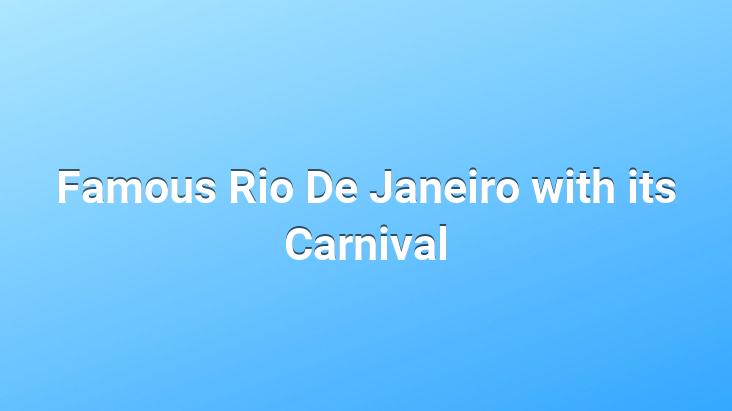We arrive early in the morning to the beaches of Copacabana. Copacabana consists of white and wide and long beaches.. There are big waves hitting the beach. This is a paradise for surfers.
The beach is closed to traffic on Sundays.. People walk or bike along the beach. Along the beach, very large pavements are made of black and white cobblestones, resembling sea waves.. There are countless luxury hotels lined up along the beach.
There are volleyball courts on the beach.. Along the beach, we see many bands playing music on the beach, bouncing balls, dancing, singing and performing various shows.. They turned this place into a carnival area.. Wherever you turn your head, a different surprise comes out.. On the beach, there are many miniature buildings made of sand. A true work of art.
After our walk on the beach, we go to the fruit market. We see plenty of coconuts, bananas and a kind of fruit called Jak in the market.
With a population of about 6 million, Rio de Janeiro is the second largest city in Brazil after Sao Paulo.. It means “January River”.
Since morning fatigue is upon us, we rest for an hour at the hotel and head straight towards Sugar (Şeker) Hill.. We take the cable car on the way up this hill.. Even from the cable car the view looks amazing. This is a region that is frequently visited not only by tourists but also by local people because of the beautiful views it offers.
Then we came to the place where the Rio Carnival was held.. Rio Carnival is an unlimited entertainment event that lasts for 4 days, usually in February.. Every year people from all over the world come here to watch this carnival.. Approximately 750,000 – 800,000 people come to watch this competition, in which an average of 3,000 – 5,000 contestants participate.. Carnival date varies according to Easter date. Held 7 weeks before Easter each year. The last 2011 carnival started on March 5, 2011 and lasted for 4 days.. 50,000 police officers were present at the festival. The festival, on the other hand, gives the audience unforgettable moments when thousands of people dance in colorful, decorated and feathered costumes accompanied by percussion instruments.. Those who migrated to Brazil from the Portuguese islands at that time brought an entertainment called Entrudo to Brazil.. Here people were having fun throwing water and lime powder at each other.. In the mid-19th century, a Portuguese named José Nogueira de Azevedo gathered with his friends on Mondays and started playing percussion instruments in the streets.. A group of 80 aristocrats, including the emperor, attended the Grandes Sociedades carnival held in 1885.. Wearing different costumes and masks, the group walked the streets with flowers and music.. The seeds of today’s carnival were planted with the festival where the people called Cordão Carnavalesco wore king, queen, witch, peasant and witch costumes.. With the participation of orchestras and choirs over time, Rio Carnival took on this form over time.
After the carnival area, we come to a cave where natural stones extracted from Brazil are exhibited.. The most important natural stones here are emerald, aquamarine (because it is blue, meaning the water of the seas), amethyst, citrine, blue topaz (similar to aquamarine but much cheaper) and tourmaline (a natural stone with the most color variety)
After seeing the natural stones, we take the train to Corcovado hill. After the train, we take the escalators to the world’s largest statue of Christ.
There are coffee trees, jack trees and a magnificent view on both sides when we go out by train.. They also play Brazilian music live inside the train.. So this trip brings joy to your eyes, ears and soul.. The statue of Jesus stands on the highest hill of the whole city with its arms wide open, as if embracing all people.
The height of the statue is 38 meters, and the distance between its two arms is 28 meters.. The right arm of the Christ Statue, which weighs 1,145 tons, points to the south, the left arm to the north, the face to the east, and the back to the west.. From here the whole city is under our feet. We sip our coffee in the cafes around the statue of Christ, accompanied by the magnificent view.
Then we go to the Macarana stadium with a capacity of 110,000.. We tour the changing rooms, showers and the field with match effects.. In the meantime, we watch a nice ball bounce show.. We bid farewell to Rio de Janeiro by seeing the footprints of famous football players in front of the stadium.
Apt with affordable prices you can choose to stay in the city.. There are hotels such as Pedra Rosilha and Cozy B&B Rio.
MUST HAVE OF RIO DE JANEIRO:Copacabana beaches, Corcovado (Christ Statue), Sugar Hill, Rio Carnival, Macarana Stadium, Natural Stones and Coffee







